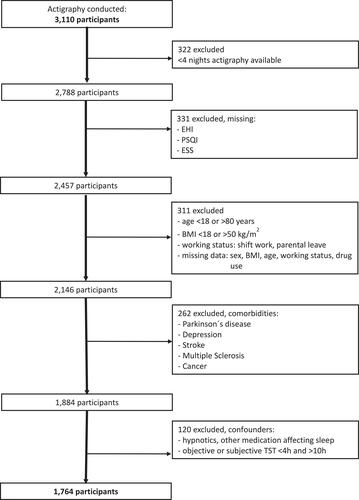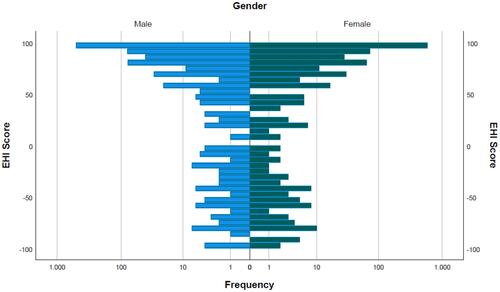Figures & data
Figure 1 Flowchart illustrating the inclusion and exclusion criteria.

Table 1 Handedness, Objective and Subjective Sleep Parameters, Daytime Sleepiness and Chronotype Across the Cohort Separated by Sex
Figure 2 Frequency of the Edinburgh Handedness Scale (EHI)-Score in female and male participants.

Table 2 Spearman’s Rank Correlation of Direction of Handedness (Mean EHI) and Degree of Handedness (Absolute EHI) with Objective Sleep Parameters Separated by Sex and Age Group
Table 3 Spearman's Rank Correlation of Direction of Handedness (Mean EHI) and Degree of Handedness (Absolute EHI) with Subjective Sleep Parameters Separated by Sex and Age Group
